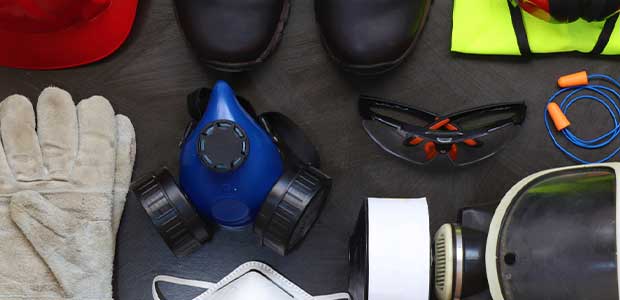
New Study Shows Many Struggle 'Often' to Get Employees to Use PPE
According to the study, the main reasons employees don’t wear PPE are that they don’t want to, they think it's unnecessary and it makes work harder.
- By Alex Saurman
- Oct 21, 2022
Over eight in 10 respondents said they struggle "often" with getting employees to use PPE, a new study from J.J. Keller Center for Market Insights shows. In total, 83 percent of respondents have issues with workers following PPE protocol “often,” while 8 percent” said it happens “sometimes.”
PPE is required in numerous industries and occupations to keep employees safe from hazards. PPE can mean the difference between no injury and a cut, burn or amputation. So why do many employees struggle with using PPE? Are there other factors at play?
The recent study from J.J. Keller Center for Market Insights, “2022 PPE Pain Points Study,” highlights PPE challenges from respondents in multiple industries, including transportation, manufacturing, construction and utilities.
The leading reason employees don't wear PPE is because they “just [don't] want to wear it,” the report said, with 72 percent reporting this as a cause. Half said they think the PPE isn’t necessary, and the same number also said the PPE makes their job harder.
Other reason employees don’t wear PPE, according to those surveyed, include not knowing they had to (21 percent) and not having PPE that fits (14 percent).
When it comes to PPE, one size does not fit all. In recent years, manufacturing companies have developed PPE to fit the needs of more workers. Earlier this year, the National Institute for Occupational Safety & Health (NIOSH) teamed with HeroX to hold a challenge focused on improving protective gear. There are strides being made in PPE design and manufacturing, but employees are still struggling to find the right size for them.
The survey showed that when it comes to PPE sizing, 34 percent of respondents found it difficult to find the right size. Even more than that reported needing a different size. Fifty-five percent needed something bigger while 41 percent needed a smaller size. The PPE giving workers the most trouble are upper body protection (53 percent) and hand protection (53 percent). Eye/face, head and foot protection and lower body protection were also listed as causing issues, but they were relatively low for employees (15 percent for eye/face, 13 percent for head, 12 percent for foot and 12 percent for lower body), the study said.
In addition, over one in three respondents said finding proper-fitting PPE for women was also difficult, a trend we’ve seen more than once.
Another PPE challenge outlined in the study is heat. Twelve percent of respondents said employees don’t wear PPE because of “something else,” which in this study, included heat. In some cases, the combination of PPE and other clothing in hot conditions may expose employees to heat hazards, NIOSH says.
The study also discusses the challenges with supply chains. A total of 71 percent of respondents said they "often" or "sometimes" “experienced supply chain delays in the past year.”
"While our respondents are clearly committed to prioritizing employee safety, their employees resist wearing the PPE they need because it's hot, it makes it harder to do their job, or they just aren't interested in doing so," said Christy Panagakis, J. J. Keller senior customer & market insights analyst in a press release. "When PPE doesn't fit properly, or they're unable to get the PPE they need due to supply chain issues, that only compounds the challenges safety managers face."
To view the full report, click here.
About the Author
Alex Saurman is a former Content Editor for Occupational Health & Safety,who has since joined OH&S’s client services team. She continues to work closely with OH&S’s editorial team and contributes to the magazine.